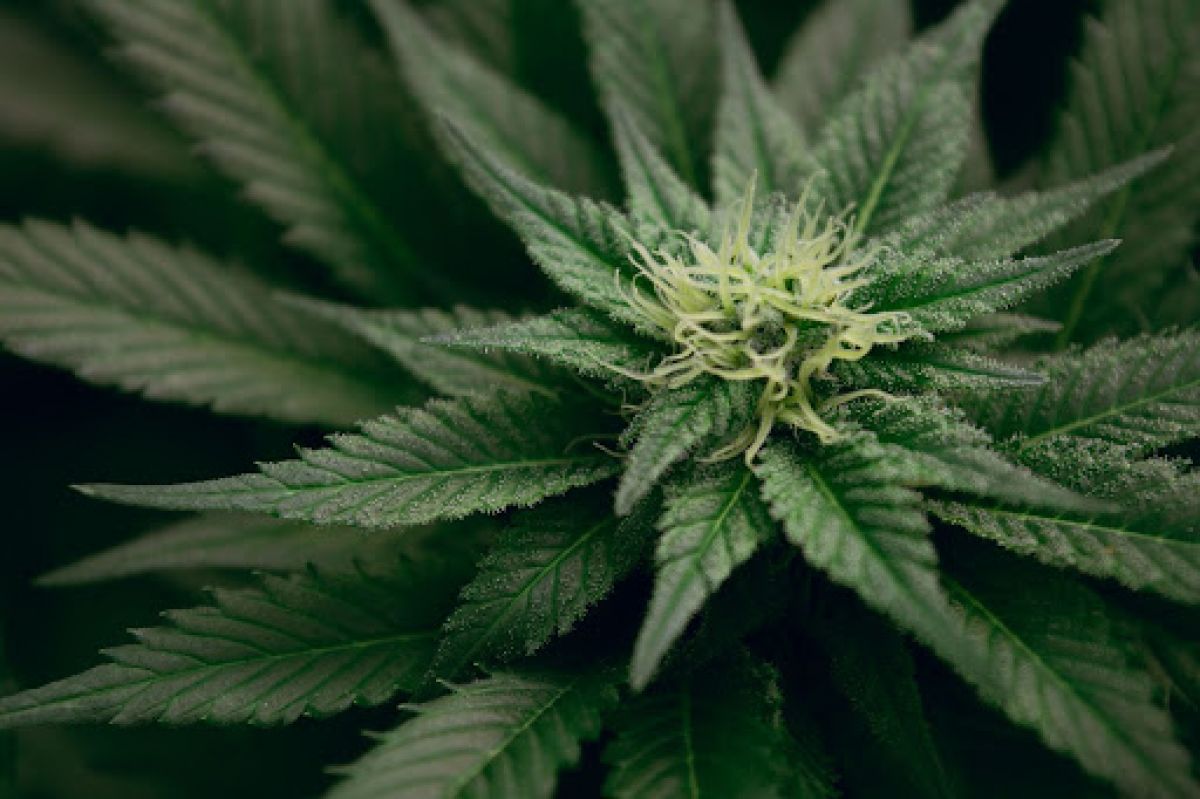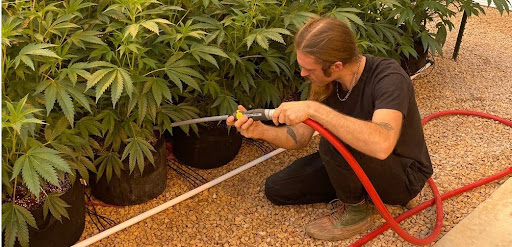The Science Behind Watering Cannabis Properly

The Science Behind Watering Cannabis Properly
Cannabis, like any other plant, needs water to grow. However, watering cannabis plants effectively can be tricky, and you’ll need the right balance of volume, frequency, nutrients, and water quality to grow them successfully. First, let’s step back and take a look at the bigger picture to understand the importance of watering your marijuana.
Why do plants need water?

Most people know that weed plants, like any other plants, need water, sunlight and nutrients to grow. Water helps plants with every life function they perform:
- Seed germination – growing roots from a seed.
- Nutrient transfer – absorbing nutrients through the soil from the roots.
- Transpiration – transferring water from the roots to the leaves through the plant stem.
- Photosynthesis – absorbing energy from sunlight.
As you can see, the details of watering cultivated weed plants is of critical importance to their life and growth.
Watering at the different stages of cannabis growth
As your plants begin to grow, the watering frequency they require will start to change.
When to start watering weed: the cannabis seedlings stage
At the seedling stage, typically between two to three weeks from planting, it is best to provide a small volume of water, around 100-200ml every 2-3 days. This will increase root production in this early phase of growth. It is important to check the plants every day and if a plant looks dry (limp or droopy) water it.
Watering marijuana plants in the vegetative stage
The vegetative stage can last between 3 to 16 weeks. Using the “crop steering” or “pulse irrigation” method, plants receive multiple feedings a day. This method starts with a larger soak of the media, followed by pulse feeding in smaller amounts throughout the day after a dry down period. The light cycle finishes with a dry down. This encourages the photosynthesis process. The number of pulses per cycle should be determined using a tensiometer, or water content sensor. In fact, if you keep your plants in large enough pots, you might only need to water them once every two days.
Watering cannabis in the flowering stage
Once the plants begin to flower, the water volume will increase slightly. Use the tensiometer to determine the number of pulse feeding and dry down periods. The uptake happens during photosynthesis and it should provide healthier, more fruitful plants.
Why you should try Automated Watering Systems
Automated watering is a great solution for larger cannabis growing operations. It’s not necessary for those with just a few plants, but it could still be an effective choice for you to experiment with, especially if you’re aiming to “grow” your operations. Advanced irrigation control systems typically include water content sensors for more accurate readings on moisture, EC, and pH. We’ve found that growers who opt out of a commercial irrigation system with a large growing operation, however, tend to suffer.
Over- and under-watering cannabis plants weakens plant health
These systems employ a constant drip from lines running between each plant, providing a small but constant water supply. It leaves you more time to do other things, but it also has plant health advantages, as well.
It prevents the challenge of overwatering, which can cause your marijuana plants to have nutrient deficiencies. This often gives the cannabis plants yellow leaves, and it’s particularly harmful as they’re just starting to grow in the seedling stage. See more details on the impacts of overwatering your weed plants due to poor drainage below.
It’s also beneficial in hot and dry climates, where pots are more likely to dry out between weed watering. The constant supply prevents extended periods of dryness once you start reducing watering frequency.
Signs of dried out cannabis plants are pretty easy to detect. They become dry and crispy in appearance.
Give nutrients to your cannabis plants
A drip line system used in automated watering also makes it easier to supply nutrients. If your system is high quality, it will have several ports to attach nutrient supplies. That automatically disburses the appropriate concentrations of nutrients while watering weed.
It’s also helpful for solid nutrient supplements that you apply to the top of your plants. When watering in bulk, a pool of water on top of the soil displaces the nutrients without spreading them. A drip system ensures that this doesn’t happen.
Balancing water and nutrient delivery is one of the ways CCS can help you optimize weed growth.
How to set up drainage for marijuana plants

Adequate drainage is absolutely essential for watering weed properly. Whether you decide on soil, coco, or another type of media, drainage is important. Make your decision by researching how fast and effectively the chosen media drains.
Getting the right container is also important for adequate drainage. That is why pots for most plants have small holes on the bottom. You certainly shouldn’t be using a pot that doesn’t have any effective drainage.
If you’re watering weeds and don’t have enough drainage, you’ll quickly notice leaves start to turn yellow. Shortly after, your plant may collapse and die. Excessive moisture leads to fungus on the roots that can kill the plant. Fixing this might require less watering or adding additional holes to the bottom of pots.
On the other hand, excessive drainage leads to your plant not getting enough water. That could mean there are too many holes in the bottom of your pot, but it’s more likely that you don’t have the correct type of soil. You could try lining the pot with peat moss or coconut fiber to improve conditions.
What water quality is safe for cannabis plants?
Now, of course, a big part of watering weed is using suitable water. Much like any other skilled growth project, water needs to contain the right mixture of minerals while not containing dangerous contaminants.
pH is one critical measure of water quality. It measures how acidic water is–a pH of 7 is neutral and anything lower indicates higher acidity. Optimal pH can vary between different strains, but 6.5 is generally in the proper range. You can quickly test runoff from your plants with store-bought pH strips, or a pH pen.
A reverse osmosis filter is one of the easiest ways to handle water quality. It filters out bacteria and other contaminants like dissolved salts that could harm your plants. Water quality optimization goes much deeper than this simple step, but it’s a great place to start for beginners.
Identifying Key Weed Watering Issues
There are some simple signs to watch for that can indicate a watering problem, including:
- Brown or yellow leaves
- Leaf spots
- Curling leaves
- Weak stems
- Drooping
- Brown roots
- Mushy roots
Once plants start to show these signs, it could take some time to restore them to a healthy condition. If you don’t take immediate action to remedy the issues, it could permanently damage your plants.
Overwatering is more common than underwatering, especially among beginners. Take care to identify the stage your plants are in and water appropriately. With just a little planning and prevention, you should be able to handle watering weeds with ease.